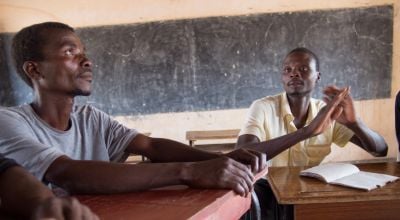
Read our 2024 annual report

Knowledge Hub
Education is a fundamental human right. But, for millions of children around the world, this right often goes unacknowledged.
This is especially true for girls: According to UNESCO, 132 million girls worldwide were out of school at the beginning of 2020. This was before COVID-19 lockdowns further compromised gender equality in education. Schooling was disrupted for 1.5 billion students, and millions of girls might not return to school. That would be a major setback for multiple reasons.
Girls’ education: Facts and figures
- Before the COVID-19 pandemic, UNESCO estimated 132 million girls around the world were out of school
- The pandemic interrupted education for 1.5 billion students worldwide
- Adolescent girls (12-17) are the highest risk for dropping out of school in low-income countries
- About 40% of low-income countries have not taken any measures to support students who are most at-risk for exclusion
- Three-quarters of all primary-age children who may never set foot in school are girls
- Women still account for almost two-thirds of all adults unable to read

Why is gender equality important in education?
We need gender equality in education to ensure that both girls and boys can access and complete programs of study, as well as become empowered equally in and through education.
Large gender gaps exist in access to education, learning achievement, and continuing education, usually at the expense of girls. Despite global progress, more girls than boys remain out of school: 16 million girls will never attend school. What’s more, women account for two-thirds of the 750 million adults who are illiterate.
Globally, only 66% of countries have achieved gender parity in primary education. At the secondary level, the gap widens significantly, with only 45% of countries achieving parity in lower-secondary education and 25% achieving parity in upper-secondary education.
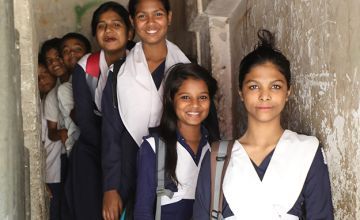
What are some of the problems encountered by girls in education?
There are many barriers to education for both girls and boys, including poverty, geographic isolation, and minority status beyond gender. However, girls face some unique challenges to accessing education.
Harmful gender norms
Harmful gender norms result in many inequalities between girls and boys. While gender norms affect all children, they disproportionately affect girls. More than 575 million girls live in countries where inequitable gender norms contribute to violations of their rights, including to education.
School-related gender-based violence and unsafe learning environments
School-related gender based violence (SRGBV) is also a significant issue of gender inequality in education. Girls are often forced to walk long distances to school, increasing their risk of gender based violence (GBV) including sexual harassment, exploitation, and abuse. In the classroom, corporal punishment remains a reality in many schools, impacting overall well-being and also leading to lower attendance rates and higher dropout rates. One of the key challenges with SRGBV is that teachers may not be trained to identify or respond to GBV issues in school. They may also be the perpetrators of such violence. With poor accountability mechanisms, an unsafe learning environment will continue without any recourse.
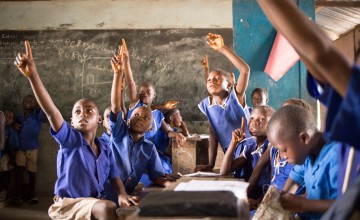
Inadequate sanitation facilities
Adolescent girls face additional challenges. Limited access to sanitary products, coupled with a lack of private space to wash, change, or dispose of them makes it more difficult for girls to attend school when they are menstruating. Additionally, shame and stigma around this is one of the main examples of gender discrimination in education, often discouraging girls from attending school when they have their periods.
Teenage pregnancy and child marriage
Girls who become pregnant often face significant stigma and discrimination from their communities. In many countries, government policies exclude pregnant girls from attending school. This can lead girls to drop out of school early and not return. Child marriage and education reach similar conclusions, with girls forced into early marriages and then expected to drop out of school to tend the home and start a family.
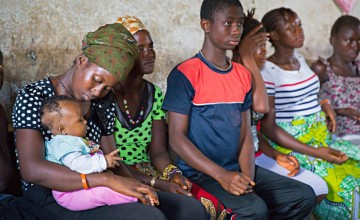
Why is girls’ education important?
In the long term, more years of education can break the cycle of poverty by improving gender equality. This can be good for entire countries, but also have significant benefits for individual girls.
Girls’ education delays early marriage and leads to smaller families
Researchers from the World Bank and the International Center for Research on Women examined 15 countries in sub-Saharan Africa (one of the regions of the world that is least conducive to education for girls). They found a strong relationship between education and child marriage. Each additional year of secondary education reduced the chances of child marriage.
The study also showed that educated women tend to have fewer children and have them later in life. This generally leads to better outcomes for both the mother and her kids, with safer pregnancies and healthier newborns.


Girls’ education is linked to better health
USAID found that girls with a basic education are generally more aware of safe sex. With a comprehensive sexual health curriculum, they are three times less likely to contract HIV/AIDS. Moreover, if all mothers completed primary education, maternal death rates would be reduced by two-thirds.
Education also helps students to develop skills like critical thinking, decision-making, and responsibility. Educated girls are also more likely to seek healthcare for themselves and their families. This is why the children of educated mothers are twice as likely to survive past the age of five.
Girls’ education increases their earning potential…
Educated women are more likely to work and even own their own businesses and generally earn higher incomes throughout their lives. According to UNESCO, a single year of primary education can increase a girl’s wages later in life by up to 20%. An extra year of secondary school can increase their wages by up to 25%. What’s more, women invest up to 90% of their income back into their family, compared to the average 30–40% that men invest back into their households.
…as well as that of their country’s
It’s not just a girl or woman’s immediate family that benefits from her quality education. Studies have shown that, when 10% more girls in a given country attend school, that country’s gross domestic product increases by an average of 3% — which can make a huge difference in a developing economy.
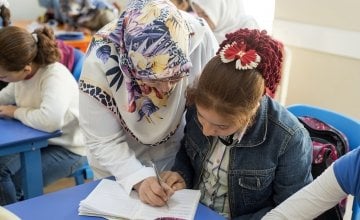
How does education promote gender equality?
Gender inequality is both a cause and consequence of inadequate or low-quality education.
Gender-equitable education systems empower both girls and boys to develop life skills that help young people succeed, including self-management, communication, negotiation, and critical thinking. And both boys and girls benefit from this approach.
Education also empowers girls and women to know and fight for their rights, and protects them from harmful gender practices, including child marriage and female genital mutilation (FGM). For men, education — especially gender-equitable education — helps them to be more equitable with the women in their lives. Educated men are also more likely to seek mental health support and less likely to abuse drugs and alcohol or engage in other high-risk behaviour.
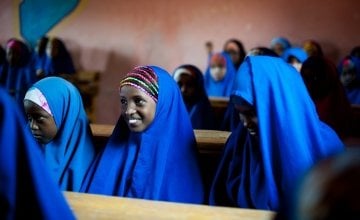
Girls’ education: Concern’s work
Concern’s work is grounded in the belief that all children — regardless of gender — have a right to a quality education. We integrate our education programmes into both our development and emergency work to give children living in extreme poverty more opportunities in life and supporting their overall well-being. Concern has brought quality education to villages that are off the grid, engaged local community leaders to find solutions to keep girls in school, and provided mentorship and training for teachers.
Our education programmes are designed to be gender-transformative, in keeping with the core values of all Concern programming. In addressing the unique barriers that each community faces to education, we also look at the barriers faced by girls within those communities, including lack of sanitary facilities, SRGBV, and other harmful gender norms that keep girls at home.



